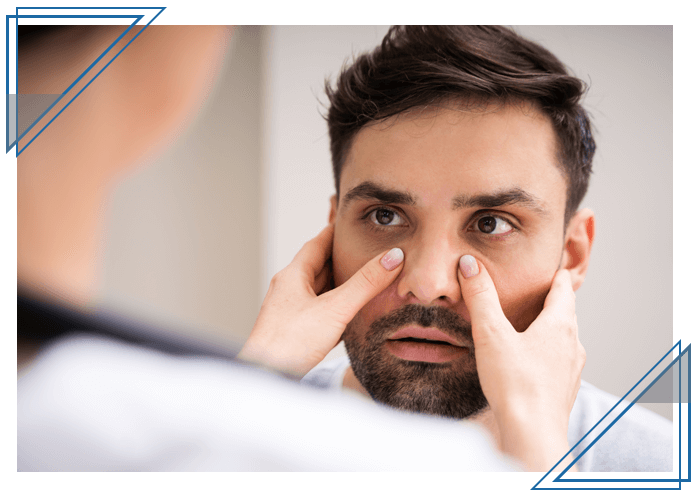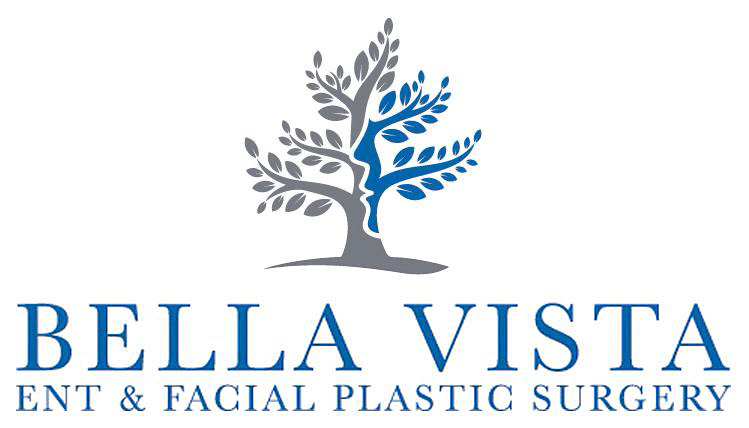Nasal Obstruction
More Than 20 Million Americans Are Affected by Nasal Airway Obstruction
Do you have the following symptoms?
- Nasal congestion or stuffiness
- Nasal blockage or obstruction
- Trouble breathing through your nose
- Trouble sleeping
- Inability to get enough air through your nose during exercise or exertion
Try the Simple Cottle Test
Does your breathing improve when you pull on your cheek to hold your nostril to the side? If yes, talk to your doctor about options to support your lateral nasal cartilage, which may include the LATERA implant.

Nasal Valve Collapse Has a New Solution!
Bella Vista ENT is now offering a better option to treat nasal obstruction called LATERA®, an absorbable nasal implant that provides supports and stabilizes the collapsing lateral nasal cartilage. Drs Feinfield and Waldman were the first otolaryngologists in the Ventura County area to be trained in using LATERA® so that they could offer this unique and successful procedure to their patients with Nasal Valve Collapse.
LATERA® may help you breathe better by reducing your nasal obstruction symptoms. It is inserted in a brief office procedure and produces excellent results in increasing nasal airflow without changing the appearance of your nose.
Clinical research showed that the LATERA® implant delivers significant relief from nasal obstruction symptoms. Patients reported improved breathing through their nose and little risk of changes to appearance.(3) The majority of patients implanted with LATERA® were satisfied with the results of their breathing (86%) and appearance (93%).(4)
Clinical Research Shows the Benefits of LATERA® (3)
- Reduced nasal congestion or stuffiness
- Less trouble breathing through the nose
- Improved ability to inhale enough air during exercise or exertion
- Reduced nasal blockage or obstruction
- Less trouble sleeping
Watch the video and learn more about Nasal Obstruction, Nasal Valve Collapse and the LATERA® absorbable nasal implant.
Turbinate Reduction Surgery
Goals of the Procedure
For patients with turbinate hypertrophy, turbinate surgery should correct the problem of nasal obstruction by reducing the turbinate size and thereby decreasing airway resistance while preserving the natural function of the turbinates. This should improve nasal breathing and may reduce nasal drainage and postnasal drip.
What to Expect
Your surgery may be performed in conjunction with a surgical septoplasty under local or general anesthesia. A surgeon will use an endoscope, a thin tube with a light at the end, to improve visualization and provide a magnified view during surgery.
The surgeon makes an incision in the lining mucosa of the turbinate and carefully removes the underlying bone of the turbinate. Your surgeon may elect to use a microdebrider to thin the tissue around the turbinate. Alternately, they may be cauterized with radio frequency or electrical current (cautery or radiofrequency surgery). Complications associated with inferior turbinate surgery include bleeding, crusting, dryness and scarring. Your doctor may prescribe a saline spray solution to relieve dryness and aid in healing.
Breathe Better, Sleep Better, Live Better
References:
- Constantian MB, Clardy RB. The Relative Importance of Septal and Nasal Valvular Surgery in Correcting Airway Obstruction in Primary and Secondary Rhinoplasty. Plastic and Reconstructive Surgery. 1996 Jul; 98(1): 47.
- Ricci, et al. Role of Nasal Valve in the Surgically Corrected Nasal Respiratory Obstruction: Evaluation Through Rhinomanometry. American Journal of Rhinology. September-October 2001, Vol. 15, Nov. 5.
- San Nicolo, et. al. 2017. Absorbable Implant to Treat Nasal Valve Collapse. Facial Plast Surg, 32:233-240.
- Market research is ongoing. Data on file (TR-21076 Spirox NVC Experience). Individual patient results may vary and may include other procedures. Use of the LATERA device in conjunction with other procedures (such as septoplasty and/or turbinate reduction) has not been clinically evaluated. Patient satisfaction results may be attributed to LATERA with other procedures.
